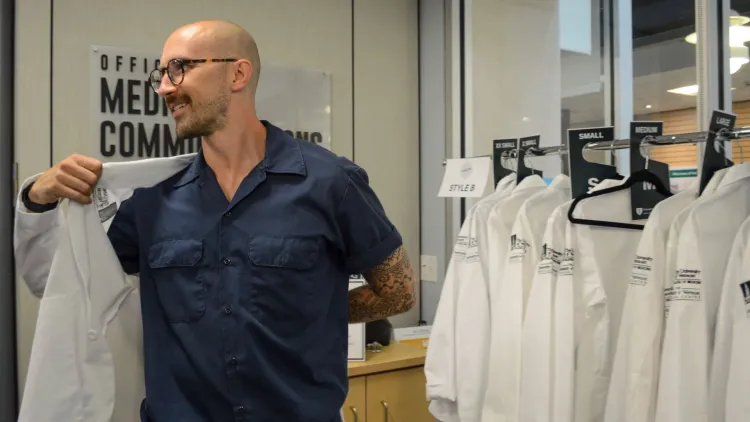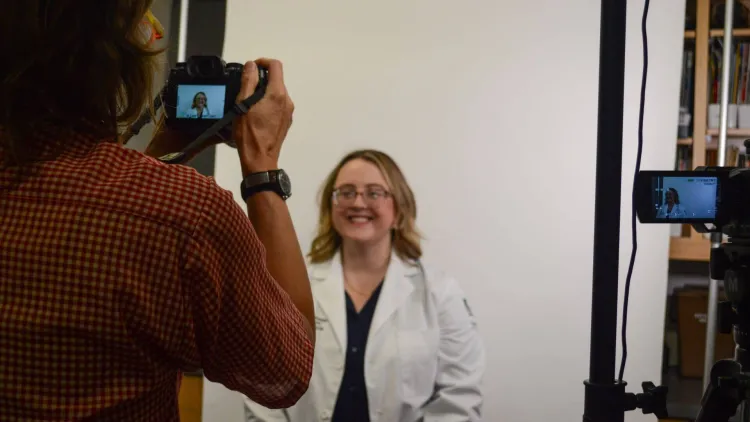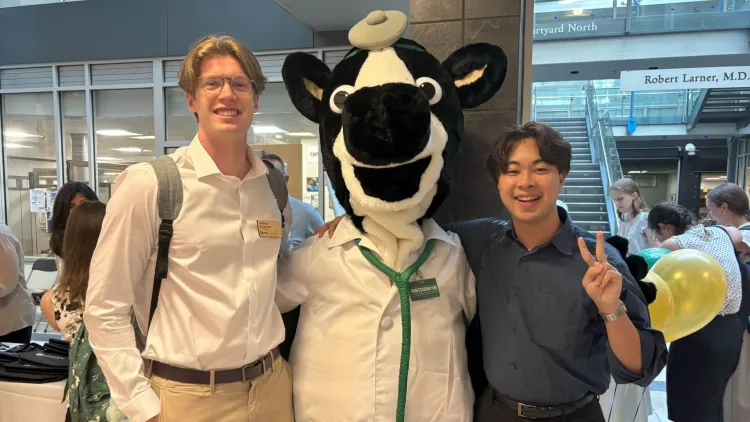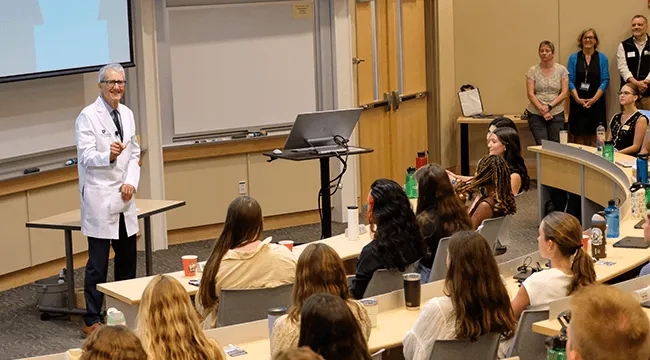
Orientation represents the first step every medical student takes at Larner. It is a week-long credit-bearing course and serves as an introduction to the college, the University of Vermont, and Burlington, as well as to fellow classmates, deans, and faculty. According to Richard L. Page, M.D., dean of the Larner College of Medicine, “Orientation is an essential part of the transition to medical school. It’s natural for our students to be both excited and a bit apprehensive. We emphasize that they belong here, and that we want to support them every step of the way as they become physicians.”

Each day during Orientation Week features a full schedule of planned activities and events. The first day of Orientation is also the day medical students meet their “first patient,” during the First Patient Simulation exercise led by Lewis First, M.D., M.S., professor and chair of the Department of Pediatrics at Larner and chief of pediatrics at the UVM Children’s Hospital. During the week, students also participate in community service projects allowing them to interact with diverse populations in Burlington, identify community needs, and build vital skills, such as leadership, community, and empathy.

The new medical school students are beginning their journey to become physicians amidst a physician and health care shortage in the United States. According to a report published by the Association of American Medical Schools in March 2024, the nation will face a physician shortage of up to 86,000 physicians by 2036.
Training and keeping the next generation of physicians and scientists in Vermont is a vital mission of the Larner College of Medicine. One-third of Vermont’s doctors received training at Larner and/or the University of Vermont Health Network, while 38 percent of Vermont’s primary care doctors were educated at Larner and/or trained at the UVM Health Network.
“With 65 percent of Vermont’s population living in rural areas—the highest percentage in the nation—local health care providers are essential in delivering care across our state, and the Larner College of Medicine remains steadfast in addressing this issue,” Dean Page said.
Leila Amiri, Ph.D., associate dean for admissions, described the Larner Class of 2029 as one of the most selective classes in the college’s history. “From a record-breaking pool of 10,377 applicants, just 124 remarkable individuals have joined us—not only as future physicians, but as scholars, leaders, and changemakers. Representing 22 states, fluent in 16 languages beyond English, and arriving from 72 universities and 42 different majors, this class embodies excellence across every dimension. With 89 percent engaged in undergraduate research and more than 350,000 hours of medical experience, they bring not only academic strength but a deep, lived commitment to service, healing, and humanity. Today, we celebrate a cohort that reflects our mission and promises a brighter future for medicine in our state and the communities we serve,” she said.

